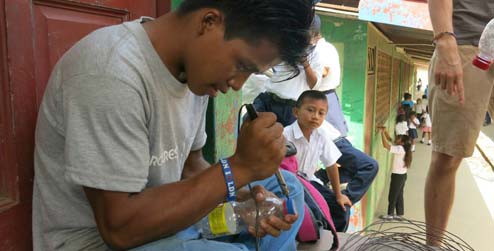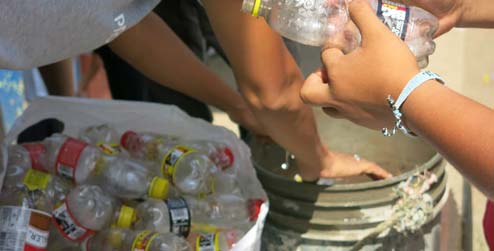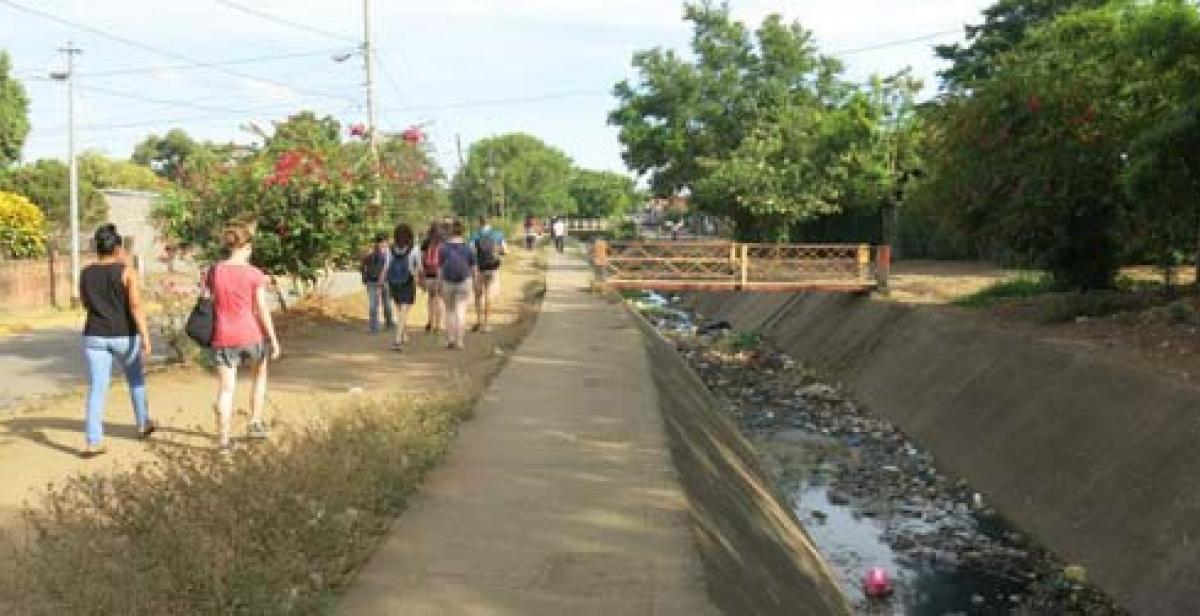From spending only a short amount of time in Masaya, it became apparent that rubbish disposal is a big problem here. Piles of litter are thrown into illegal rubbish dumps throughout the city, which remain until rainy season when they are sadly washed into the lagoon. One local woman said “Cuando las personas indígenas vivían aquí, [la laguna] era muy limpia”. (When the indigenous people lived here, [the lagoon] was very clean). However, over time and with the negative consequences of rapid globalisation, the cleanliness of the lagoon has radically diminished and in less than 30 years it has become unsafe for swimming and fishing.
“Here in Masaya there is a big problem with illnesses caused by contamination, for example diarrhoea, dengue and leptospirosis from rats”, I was told during an interview with a woman who lives nearby an illegal dumping ground in Monimbo. The people who suffer the most from these illnesses are those who have the least means to influence change: the young and the old. My research revealed that there is a twice weekly rubbish collection here in Masaya, free of charge in some barrios, including Monimbo. Every day, 136 tonnes of rubbish is collected in Masaya. Yet, when asked, most local people will say that litter remains a serious problem, and vast amounts of rubbish can be found piled up next to empty bins and in valleys. So why is this the case?

When I enquired further into the issues surrounding the environment it became apparent that the problem is as much to do with a lack of bins as it is to do with a lack of education on the importance of proper waste disposal. “It is easier for people here to throw the rubbish on the streets… Cleanliness in the community is not a priority for most of Nicaragua’s population”, I was informed. “There was a time when cars couldn’t drive up certain roads because there was too much litter blocking the way”.
Our team decided to approach the problem from a variety of angles. Firstly we concentrated on creating bins out of recycled bottles with students at a school in Monimbo. A recycling competition was also arranged at the school which was met with much enthusiasm. Children turned up with all sorts of items, from functioning electric lamps made from old fabric conditioner bottles to handbags made from paper. It seemed that despite the careless attitude towards rubbish and recycling, children actually wanted to take part in the activity and seemed proud of the results they had achieved.
We are planning to construct more bins for the community that we hope will remain a permanent aspect of Monimbo. We are also organising a litter pick and a meeting with the people of Monimbo to promote environmental awareness and to encourage people to take pride in playing an active role in the maintenance of their community.

However, it is going to take much more than a short term awareness raising plan to change attitudes to waste in Masaya. If Masaya is to begin regaining its cleanliness, a radical cultural change is necessary. The worst area for litter in Masaya is the municipal market. Cleaners work every day to collect the rubbish which is immediately replaced, making the problem and endless cycle over which no-one has control.
Because 75% of the rubbish that is thrown out here is organic, it makes sense to use it as crop fertilizer. With the right organisation and motivation, Masaya could reach its full green potential, but not until the people who live here take more care of their community, want to make a difference, and break the heavily embedded generational patterns of careless waste disposal.
By ICS volunteer Fae Krakowska



